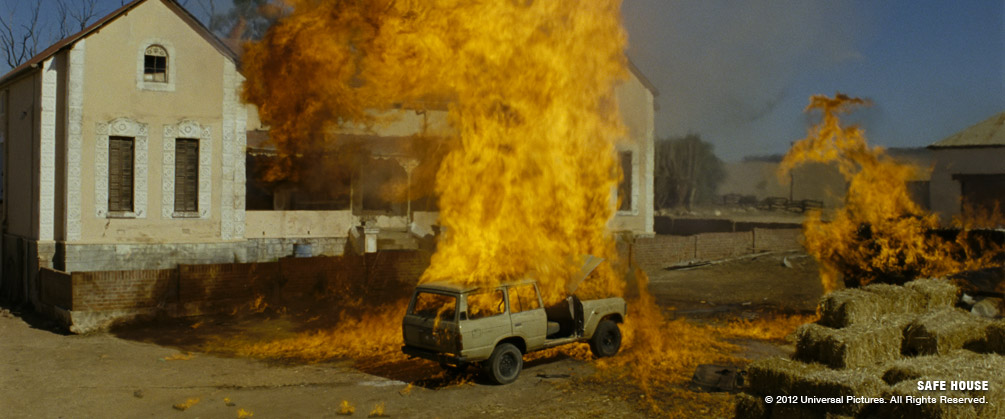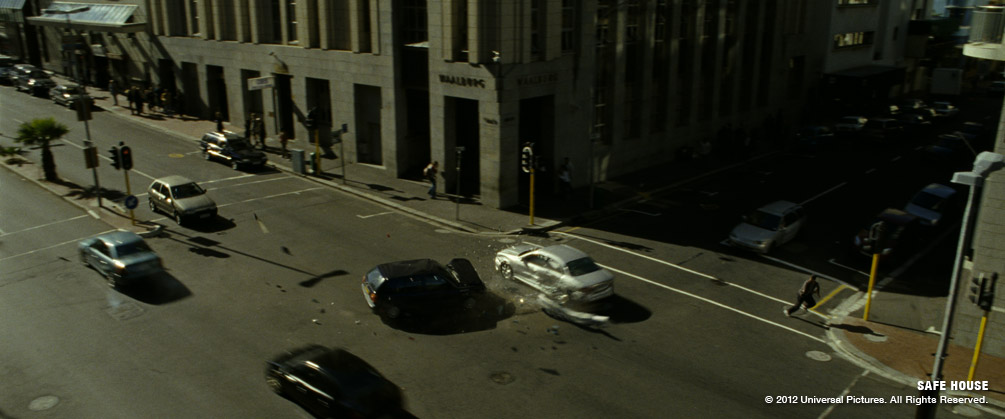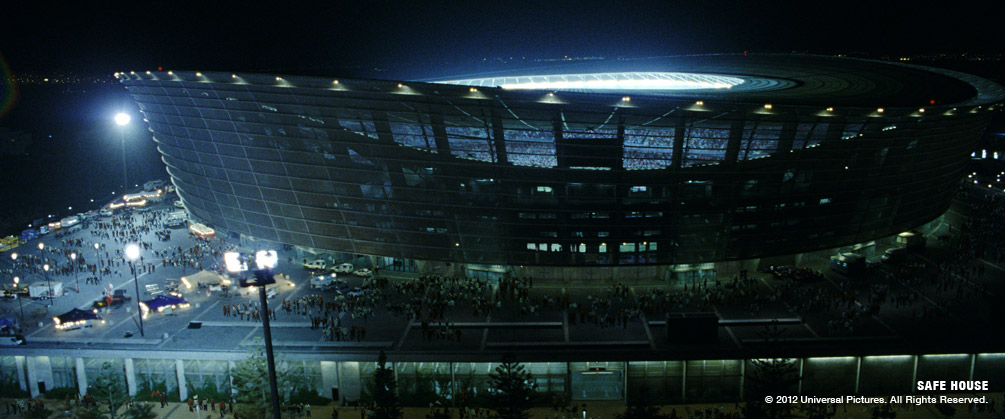Safe House Case Study

Case Study
Image Engine puts the danger in Safe House; designing ‘invisible’ visual effects shots to dial up the action.
As the sole vendor, Image Engine dials up the danger in Safe House, providing 371 invisible visual effects shots including CG vehicles, fire and explosions, face replacement, matte painting, crowds and gore.
This Universal Pictures film tells the story of a rookie CIA agent (Ryan Reynolds) who is tasked with looking after a fugitive (Denzel Washington) in a safe house. When the house is attacked, he finds himself on the run with his charge.
Simon Hughes, Image Engine visual effects supervisor helmed the project for the production, alongside Steve Garrad, visual effects executive producer and Geoff Anderson, visual effects producer. They worked closely with director Daniel Espinosa (Snabba Cash), editor Richard Pearson (The Bourne Supremacy, Iron Man 2), VFX editor Kevin Hickman and Universal Pictures.
Image Engine set to work making recommendations from the script and initial edit to enhance the narrative story points and heighten the sense of danger and excitement in the movie. “For a visual effects studio, being involved with the initial narrative process is key to doing a great job,” said Garrad, “Universal gave us the creative freedom and responsibility to really enhance what is a top-notch action-packed thriller.”
As Hughes describes, the end result was: “A mix of crowds, CG car crashes, green screen composites, car crash augmentation, face replacements, gore additions, matte painting, set extensions, explosions, muzzle flashes and squibs and sparks all over the place. In other words, a lot of VFX fun!”
Image Engine was on set for the entire shoot to oversee everything from the driving sequences to the crowd shoot, represented by Hughes and Jeremy Hattingh (Cape Town on-set supervisor). The film was shot in a fast-paced documentary style, which required Image Engine to be able to adapt and improvise on set whilst staying unobtrusive and keeping things fluid for production.
Dialing Up The Action
Throughout the car chases, the crew looked for opportunities to turn the volume up on crashes and impacts to help heighten the overall sense of danger and excitement – including more debris on impacts, smoke from wheel skids and skid marks – as well as fully computer-generated vehicle collisions. The handheld and zooming cameras presented some of the key challenges for the matchmove department, which created new cameras for Animation and FX.

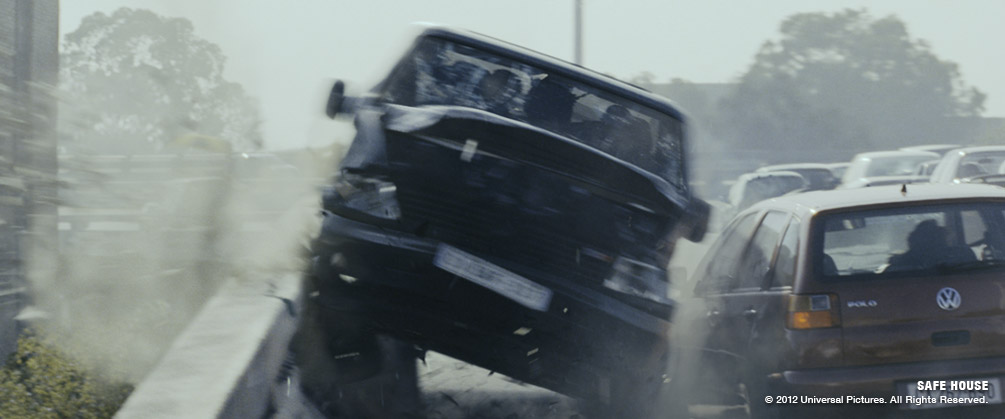


One of the hero shots involved the full CG replacement of a van, which allowed for a faster and more violent collision.
The assets team was responsible for creating the CG van, which was built from scratch and involved a high level of input from lighting and FX. In this shot, 80% of the original plate was replaced, all close to the camera and integrated seamlessly with the original scene.


FX also had a blast with vehicle explosions, where their brief was to heighten the intensity with added engine parts and glass.
Other ‘invisible’ effects ranged from face replacement to matte painting; while the deaths within the gun battles were peppered with gore seen flying from exit wounds.


Crowds
In a climactic chase sequence, much of the action took place around Cape Town’s Green Point stadium, during a major football match. Plates were shot with a mostly empty stadium, which Image engine populated with tens of thousands of football fans.
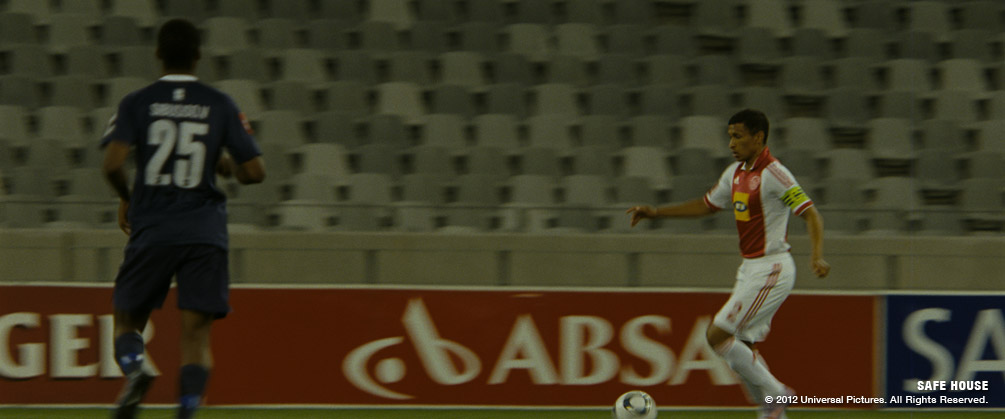
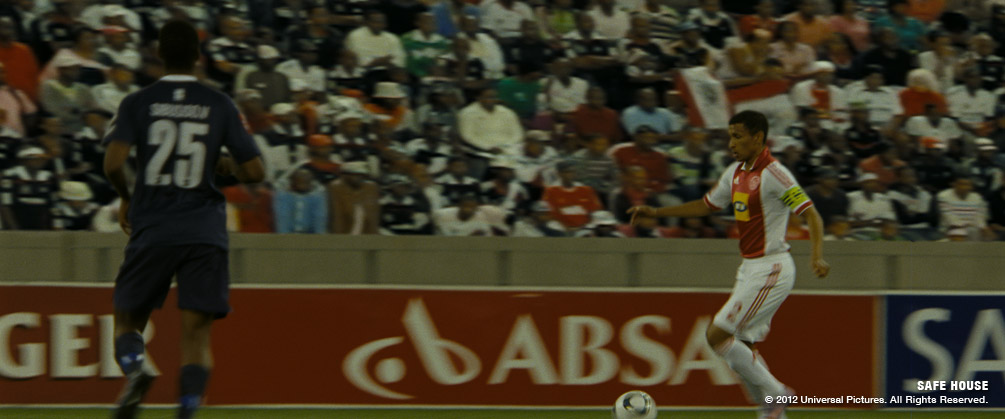
This was managed swiftly and successfully in 2D, due to a comprehensive tile shoot, which enabled the job to be handled by with camera projections onto geometry derived from a lidar scan of the stadium. “After looking at various options with the Director, and after mocking up camera moves with a stand-in and testing in NUKE we decided that a 2D approach was going to be the most efficient way of handling these shots,” said Hughes. “This just meant that the crowd tile shoots needed to be well planned, and then the setup in NUKE would be relatively straightforward.”
There were 12 shots in total covering the interior and exterior of the stadium.
500 extras were brought in for the VFX shoots, which essentially filled one block of seating, out of about 200. In addition to the 2 film cameras used to replicate the nodal move and opposing shots, 3 additional Canon EOS 7D cameras were set up on opposing sides of the stadium. “This meant that instead of having to shoot a tile for each block of the stadium, we only needed to shoot along one half and reuse the opposing camera to fill the other side of the stadium,” explained Hughes.


In addition, the same extras were filmed walking in groups outside the stadium, which would later be filling the streets and upper concourse; and a second crowd element shoot took place in Vancouver. To plan for the initial tiling setup for the exterior crowd shoots, a test was set up using crowds from a previous show, which helped to determine the numbers, position and whether or not the 2D approach would hold up successfully.
Once keyed and prepped, these groups were projected onto tiles throughout the front of the set and the crowds were accurately positioned once the stadium geometry was available. The camera was supplied via matchmove, with the setups all done in Nuke.
There were roughly 20 groups of crowd retimed and repeated another 111 times, projected in different positions until the outer concourse was filled. This resulted in several thousand extras in place.
Evelyne Leblond, Compositing Supervisor for the show, was responsible for the seamless integration of all the elements. This involved setting up the gameplay (which had been shot separately in another stadium), testing the cameras, selecting footage of the crowds and in some cases retiming the footage so that details, such as flag waving, could be seen easily.
Finally, it came down to a solid job of keying and rotoscoping all the foreground objects and integrating the footage within the stadium – matching lighting, atmospherics and generally keeping things consistent – no mean feat when dealing with such a large projection.
In summary, Safe House was a comprehensive show, all completed within a tight schedule matching the high-energy pace of the film itself.


“Safe House was a lot of fun from day one; it was just one of those projects that had such solid foundations behind it; with DOP Oliver Wood and editor Rick Pearson on board,” said Hughes. “In addition, Daniel Espinosa gave us a huge amount of creative freedom and trusted us to come up with the goods. I can’t say enough how awesome the crew was at Image Engine, and how everyone just got on board, worked fast and enjoyed the ride.”




